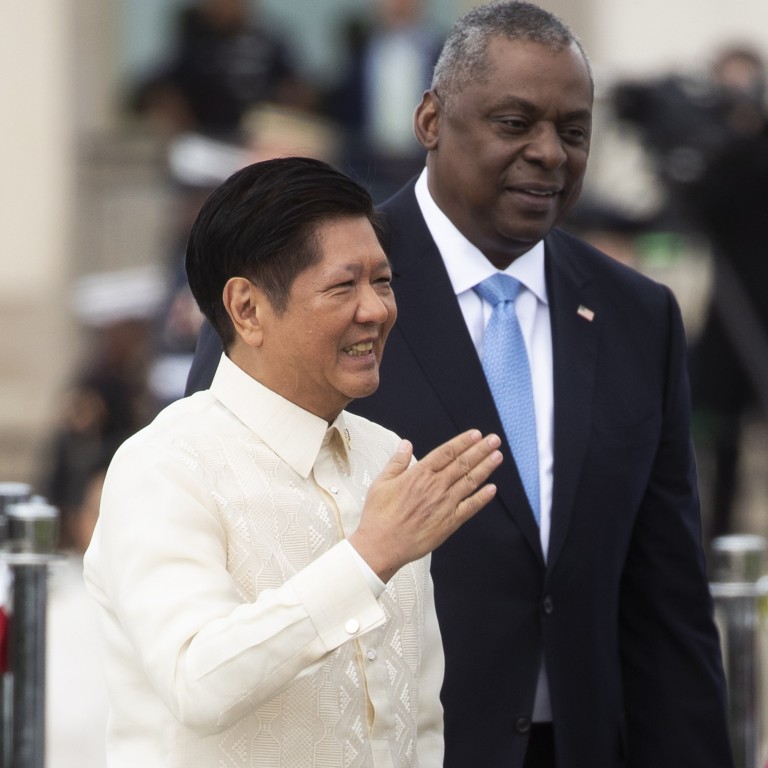
US, Philippines establish ground rules to counter China in South China Sea and Taiwan Strait
- Ferdinand Marcos Jnr’s visit to Washington amid tensions with Beijing yields plan for enhanced intelligence sharing on common ‘threats and challenges’
- Clear message sent to China that armed attack in Pacific ‘on either Philippine or US armed forces’ would invoke allies’ mutual defence commitments
Washington and Manila would broaden “information sharing on the principal threats and challenges” to the peace and security of the US and the Philippines, according to a fact sheet relating to the meeting.
The arrangement would entail “a whole-of-government approach to coordinate actions in the event of an anticipated or emergent crisis or contingency”, it added.
Towards this end, both sides would develop “adaptable decision-making processes and effective communication procedures to support flexible, timely, and effective bilateral coordination and action tailored to each situation through inter-agency coordination”, the document said.
These efforts aim to focus on “principal regional security concerns” while fostering a “common understanding of roles, missions and capabilities within the framework of the alliance to face regional and global security challenges”, it further noted.
Manila has continued to raise concerns over what it calls China’s “aggressive tactics” towards Philippine fishing vessels in the disputed waters of the South China Sea to which Beijing has claimed historical sovereignty rights.
As Philippines moves closer to US, will region change tack on China?
Last week, the US State Department issued a statement accusing Beijing of “intimidating Philippine vessels undertaking routine patrols within their exclusive economic zone”. It reaffirmed America’s commitment to defend the Philippines in the event of an “armed attack in the Pacific, which includes the South China Sea”.
Wednesday’s announcement sent a clear message to Beijing that an armed attack in the Pacific “anywhere in the South China Sea, on either Philippine or US armed forces – which includes both nations’ coastguards – aircraft, or public vessels” would invoke the mutual defence commitments between Washington and Manila under their mutual defence treaty.
Cross-strait issues elevated as a concern in the US-Philippine alliance in 1996 when Chinese unarmed ballistic missiles landed near Taiwan’s coast.
The decision came “in the face of an aggressive and expansionist China”, Cruz De Castro wrote in an analysis for the Brookings Institution in March.
Beijing has long said Taiwan is to be eventually united with the mainland, by force if necessary. While the US does not recognise Taiwan as a sovereign state, it is legally bound to support its defence capability.
US cannot use Philippines to store arms meant for defending Taiwan, Manila says
As tensions with China mount, the Biden administration has striven to shore up ties with Asian allies. In recent months it has hosted several friendly leaders from the region, especially those whose countries are military treaty partners with Washington.

